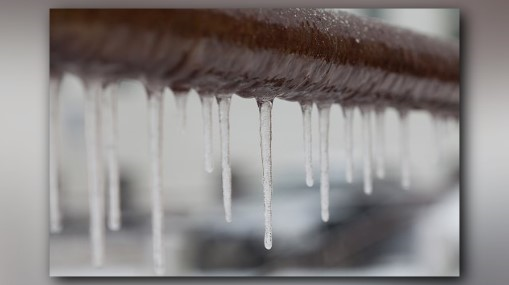Prevent Frozen Pipes in Winter: Expert Strategies
Prevent Frozen Pipes in Winter: Expert Strategies
Blog Article
Just how do you actually feel in relation to How to Prevent Your Pipes From Freezing?
:strip_icc()/snow-outdoor-faucet-pipes-4af65d1e5e904fb1aa7bf74071fe5d89.jpg)
Cold weather can damage your pipes, specifically by freezing pipelines. Right here's exactly how to stop it from taking place and what to do if it does.
Introduction
As temperature levels decrease, the threat of icy pipes rises, possibly resulting in pricey repair services and water damages. Understanding just how to stop frozen pipelines is critical for homeowners in chilly climates.
Avoidance Tips
Protecting prone pipelines
Cover pipelines in insulation sleeves or use warmth tape to secure them from freezing temperatures. Focus on pipelines in unheated or external locations of the home.
Home heating methods
Maintain indoor rooms appropriately heated up, specifically locations with plumbing. Open up closet doors to allow warm air to distribute around pipes under sinks.
Just how to determine icy pipes
Look for reduced water circulation from faucets, uncommon smells or noises from pipelines, and noticeable frost on subjected pipes.
Long-Term Solutions
Structural adjustments
Think about rerouting pipes away from exterior walls or unheated locations. Add added insulation to attics, basements, and crawl spaces.
Upgrading insulation
Invest in top notch insulation for pipes, attics, and wall surfaces. Appropriate insulation helps maintain constant temperature levels and decreases the danger of frozen pipes.
Securing Outside Pipes
Garden pipes and exterior faucets
Separate and drain pipes garden hose pipes before wintertime. Mount frost-proof faucets or cover outside faucets with shielded caps.
Understanding Frozen Pipes
What triggers pipelines to freeze?
Pipes freeze when subjected to temperatures below 32 ° F (0 ° C) for prolonged periods. As water inside the pipes ices up, it increases, putting pressure on the pipeline wall surfaces and potentially creating them to burst.
Dangers and damages
Frozen pipelines can bring about supply of water interruptions, residential property damage, and pricey repair services. Burst pipes can flooding homes and cause extensive structural damage.
Indications of Frozen Pipes
Identifying icy pipes early can prevent them from breaking.
What to Do If Your Pipelines Freeze
Immediate activities to take
If you think icy pipes, maintain faucets open to ease stress as the ice melts. Use a hairdryer or towels soaked in hot water to thaw pipelines slowly.
Final thought
Preventing frozen pipelines needs aggressive measures and quick feedbacks. By recognizing the causes, signs, and safety nets, homeowners can secure their pipes during winter.
5 Ways to Prevent Frozen Pipes
Drain Outdoor Faucets and Disconnect Hoses
First, close the shut-off valve that controls the flow of water in the pipe to your outdoor faucet. Then, head outside to disconnect and drain your hose and open the outdoor faucet to allow the water to completely drain out of the line. Turn off the faucet when done. Finally, head back to the shut-off valve and drain the remaining water inside the pipe into a bucket or container. Additionally, if you have a home irrigation system, you should consider hiring an expert to clear the system of water each year.
Insulate Pipes
One of the best and most cost-effective methods for preventing frozen water pipes is to wrap your pipes with insulation. This is especially important for areas in your home that aren’t exposed to heat, such as an attic. We suggest using foam sleeves, which can typically be found at your local hardware store.
Keep Heat Running at 65
Your pipes are located inside your walls, and the temperature there is much colder than the rest of the house. To prevent your pipes from freezing, The Insurance Information Institute suggests that you keep your home heated to at least 65 degrees, even when traveling. You may want to invest in smart devices that can keep an eye on the temperature in your home while you’re away.
Leave Water Dripping
Moving water — even a small trickle — can prevent ice from forming inside your pipes. When freezing temps are imminent, start a drip of water from all faucets that serve exposed pipes. Leaving a few faucets running will also help relieve pressure inside the pipes and help prevent a rupture if the water inside freezes.
Open Cupboard Doors
Warm your kitchen and bathroom pipes by opening cupboards and vanities. You should also leave your interior doors ajar to help warm air circulate evenly throughout your home.

I came across that blog entry about 6 Ways to Prevent Frozen Pipes while doing a lookup on the internet. Kindly take a moment to promote this page if you enjoyed it. I treasure your readership.
Book Now Report this page